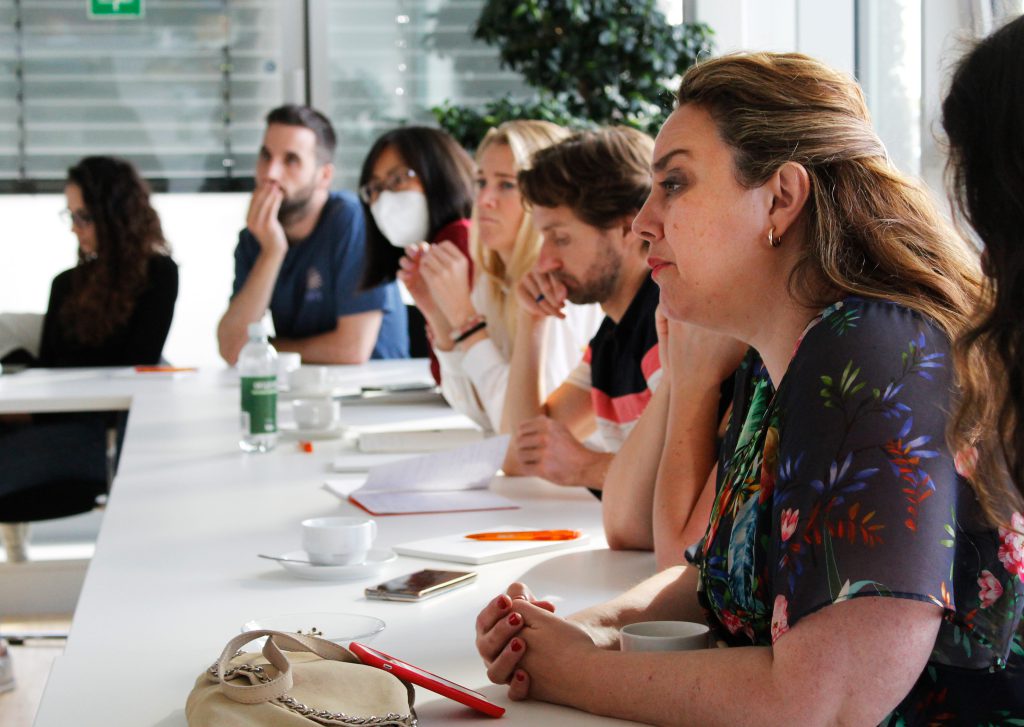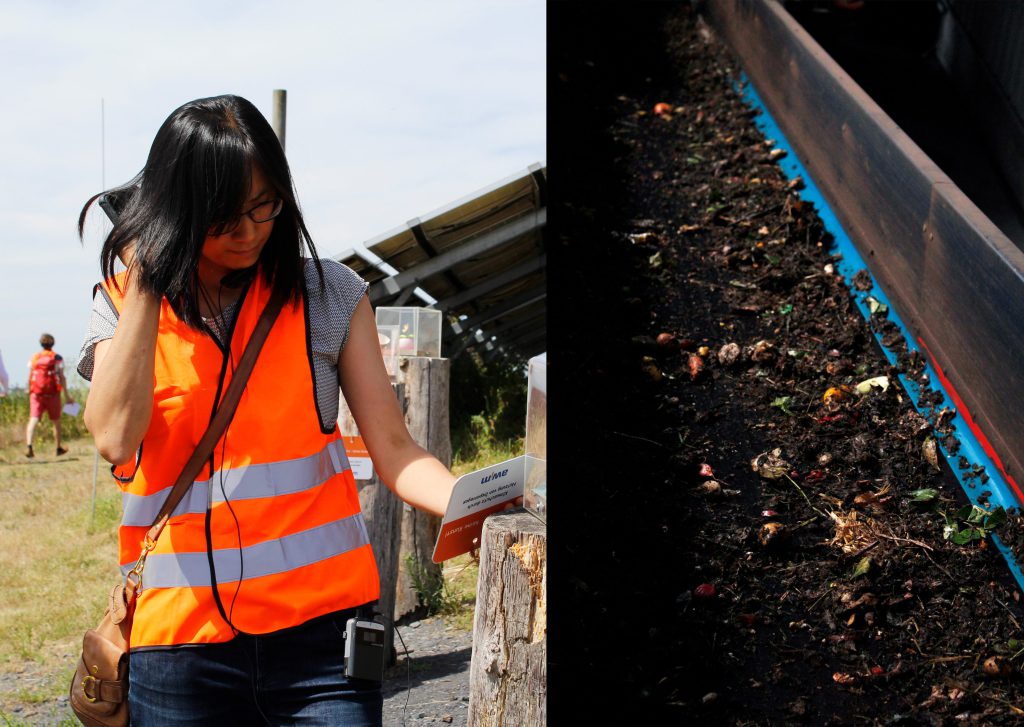HOOP Lighthouse Cities share their experience in circular bioeconomy in the first Study Tour in Münster and Almere.
As we begin to see a shift towards the circular economy, many European cities struggle to put in place efficient and sustainable waste management systems that work for their citizens. In the context of climate change, proper waste management has the potential to lower greenhouse gas emissions from landfills and preserve the environment by reducing air, water, and soil contamination.
According to the European Commission, the average European produces over 5 tonnes of waste each year, and in some European countries, as much as 60% of household waste still goes to the landfill. This waste is often incinerated, or left to decompose, producing GHG methane, and leach chemicals into the soil and water, damaging both aquatic and terrestrial ecosystems. Alternatively, a circular approach to waste management creates the opportunity to reduce environmental impacts while generating value from waste, giving it new life.
To achieve a circular economy, a city must reconsider how it thinks about waste. The HOOP project brings together 8 cities and regions that are leading the way, our Lighthouses. Whether it is through anaerobic digestion or the upcycling of biowaste, HOOP Lighthouses are at the forefront of waste management innovation and collaboration.

On 21 and 22 June 2022, Lighthouse cities Münster, Germany, and Almere, Netherlands, hosted members of the HOOP Network of Cities and Regions for the first Study Tour to exchange knowledge and facilitate discussion on replicability. HOOP technical partners and the other 6 Lighthouses were also actively attending. R&D Technician at the Environment Department of CETENMA, HOOP Partner, Elisa Gambuzzi emphasizes the value of visiting other Lighthouse cities:
“It’s not only really important to develop tools to foster European circular bio-economy, you also have to guarantee that other parties across Europe or worldwide have the opportunity to understand what you are doing to be able to apply it in their own territories,” Gambuzzi said.
Münster, 21 June
The Study Tour began in Münster at the headquarters of the local waste management company, Abfallwirtschaftsbetriebe Münster (AWM), which serves the city’s 315,000 inhabitants. The company has been separating out biowaste since the early 90s and the landfilling of waste was discontinued in its entirety in 2016.
Münster’s biowaste collection system and anaerobic digestion facility are what make the Lighthouse city unique. By separating out biowaste, the city increases the amount of waste recycled and generates new value streams from the products of the anaerobic digestion process.

Right: Biowaste is transported through the anaerobic digestion centre on 20 June, 2022 in Münster. The centre receives around 17,000 tonnes of compost per year from Münster citizens.
Christoph Baumann, HOOP Project Manager at AWM in Münster, explains:
“We use anaerobic digestion to produce biogas from the easily digestible biowaste from households that is collected weekly in our biowaste bin,” Baumann said. “Additionally, we use green and garden waste from our monthly bag collection, which is less suitable for anaerobic digestion, as a structural material to produce high-quality compost from the digestate produced in the aforementioned fermentation process.”
The biogas produced during anaerobic digestion generates electric and thermal energy used to power AWM’s entire waste management centre, and the surplus electricity is fed into the local power grid. By giving the methane – which has around 25 times more warming potential than CO2 – a direct use, AWM is preventing methane leaks while reducing their external energy demands. The company now looks to improve their energy storage capabilities.
Additionally, 29,000 tons of green and garden waste is received each year at the AWM composting site. The organic material is dumped and shredded before air is guided through the heap, and depending on the weather conditions, additional water percolation is introduced. The complete process lasts about 16 weeks before reaching the final product. Each year some 20,000 tons of compost is distributed for gardening, landscaping, and agriculture.
Learning and awareness
AWM puts a large emphasis on waste management education: the higher the quality of the biowaste, the higher the yield of the valorisation process. Therefore, citizens play a fundamental role in the waste process. Not only does AWM teach the public about the separation of waste, they also make a point to remind those who have already been taught its importance.
AWM’s efforts are specialized in educating the city’s youth and refugees. One example is AWM’s landfill adventure trail for kids. Tour participants connected with their inner child as they interacted with the 12 learning stations along the trail.
Almere, 22 June
On day two, the Study Tour continued in Almere, Netherlands, where the city has discovered an innovative way to reuse residual waste to produce a new, sustainable material they call ‘green concrete.’ The concrete’s cement-free formula is based on recycled concrete that admits up to 5% of vegetal recovered fibres to produce a 15% lighter material. Fibres recycled from green waste find another application when mixed with bioplastics like PLA: the outcoming bio composite is currently used to produce traffic signs.
The day began at City Hall where the partners learned about Almere’s biowaste management system. As the Netherland’s newest city, they have the advantage of putting circularity enhancing processes in place from the beginning.
Peter de Boer, Waste & Circular Economy Consultant in Almere, explained “we also want to make sure we build a city that’s circular, that’s sustainable, that you can give to the next generation.”

Almere is putting this vision into practice through its Raw Material Collective initiative. The Collective, which started in 2017, has spread nationwide and successfully recycles materials from the city.
At the Cirwinn recycling centre, which Study Tour participants visited, waste such as debris, giant hogweed, aquatic plants, and old construction materials are recycled into new raw materials, such as cementless concrete – concrete has the largest carbon footprint in the construction industry. There are still challenges to be overcome, not least uncertainty regarding the material’s durability, requiring constant monitoring, as well as addressing opposition from the cement industry. Nevertheless, circular materials can be used in traffic signs, bike paths and benches around the city, and even a bridge at the International Horticultural Floriade Expo in Almere, the final stop of the tour. The Study Tour gave the chance for Münster and Almere to receive both recognition and constructive criticism for their waste management innovations and facilities. Other Lighthouse and Network partners were thankful to have the opportunity to connect, compare, and learn from each other. To learn more from the HOOP Lighthouses and Network cities, sign up for the newsletter here.
